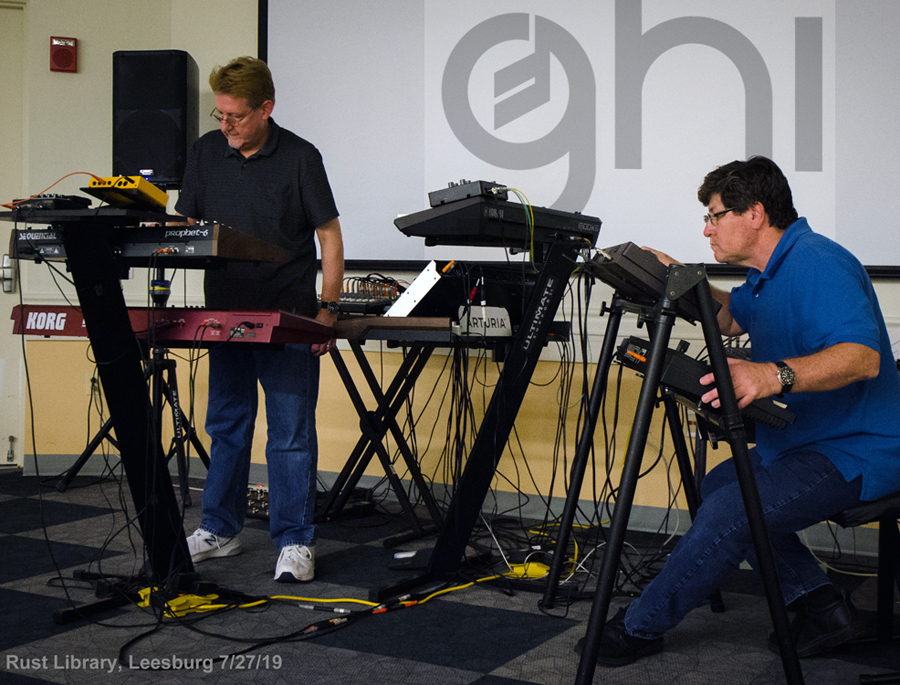By Keith Walsh
In the age when there was no such thing as instant long distance two-way communication aside from the telephone, it would have been much less likely that I’d connect with Greg Kist. Kist, whom I met on a Moog Music page on Facebook, has worked on manuals and documentation for some of the most famous synthesizer brands, and was very gracious and kind in answering my questions. So here goes.
(Featured image shows Kist, (left) and his GHI bandmate Hal Schmulowitz. Photo By Mark Hollis.)
KW: What experiences and background led you to your work with Moog and others?
Greg: I am in fact an electrical engineer and musician, and have had a number of opportunities to work with Moog Music on various projects down through the years. I authored all three Little Phatty User Manuals, the combo Voyager/RME and Voyager XL manuals, the Taurus Bass Pedal manual, the MP-201 Multi-pedal manual, and lastly the Minitaur manual. I’ve also worked on several projects for SoundTower software which included Moog and Kurzweil Editor/Librarians.
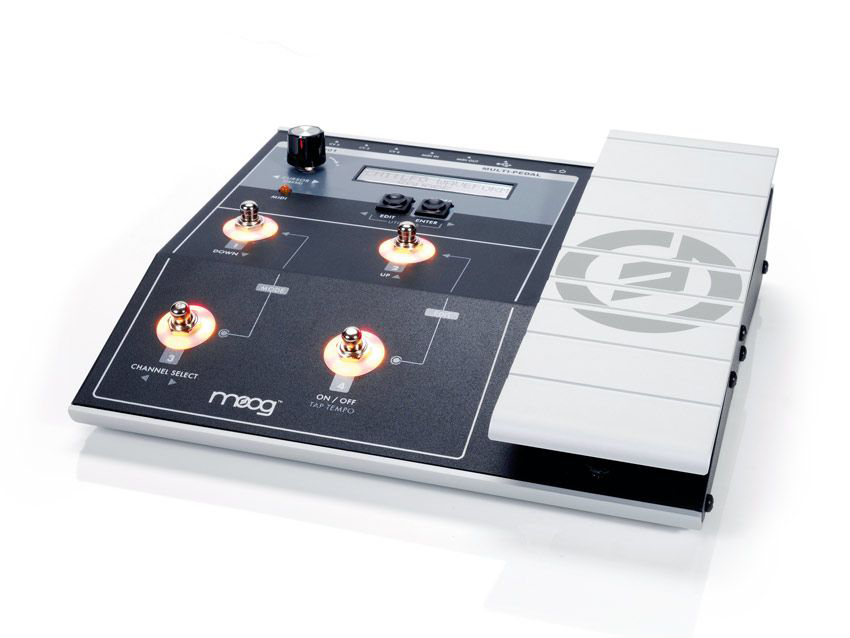
While in it’s heyday, I ran a Voyager resource website called ‘KnobTweak’ and created many articles and uploads for the instrument and a few other Moog products. One article in particular, called ‘Lord of the Ring Modulator’ (about the MF-102 Ring Modulator pedal), has taken on a life of it’s own and has been shared on many other Internet sites.
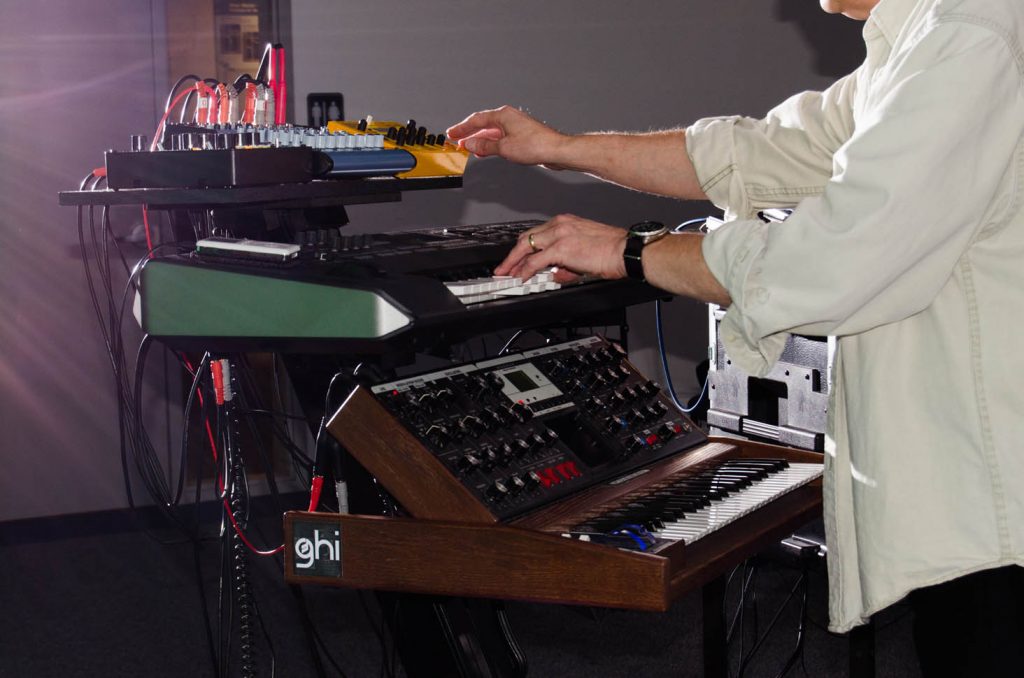
These days I’m a moderator on the Moog forums, and an admin/participant for several Facebook forums. I play in a Space Music duo (‘GHI’) and accompany worship liturgy musicians in my church.
KW: Tell me about GHI.
Greg: GHI is the space music duo of myself and bandmate Hal Schmulowitz. We’ve been performing together since 2009, and have been a part of every ElectronicaFest since it began. We have also performed locally in a number of venues in Baltimore and Washington DC, and have been the closing act at ElectronicaFest for the last two years.
(Greg Kist’s Solo Composition, “Pursuing The Dream.”)
KW: What personal interests prepared you for your work?
Greg: The simple answer is a life-long interest in synthesis and electronic music. Going back to my teenage years, I had developed a healthy interest in synths from listening to artists like Wendy Carlos, Isao Tomita, and Keith Emerson, and literally devoured everything I could find on the subject, much of which came from articles and ads in Keyboard magazine (it was called “Contemporary Keyboard” magazine back then).
One day, I found out that my high school had acquired a Moog Sonic Six. I never learned exactly how that happened, but I was pretty excited about it. Since I had a pretty good understanding of synthesis by then, and because no one else really understood how the instrument worked, they let me take it home and play with it. It was my first experience with a real Moog and I was simply enthralled with the instrument. I actually got to use it later in a performance with the school’s choir. It was a real highlight of my high school experience.
Following high school, I got a degree in Electrical Engineering. As a freshly-minted engineer, one of my first jobs involved a good bit of technical writing, and I found that I was pretty good at it. Eventually I moved into a technical management position that required both good writing and organizational skills – something that I had developed by that time. Little did I know that those two skills would become very useful in a different context at a later time.
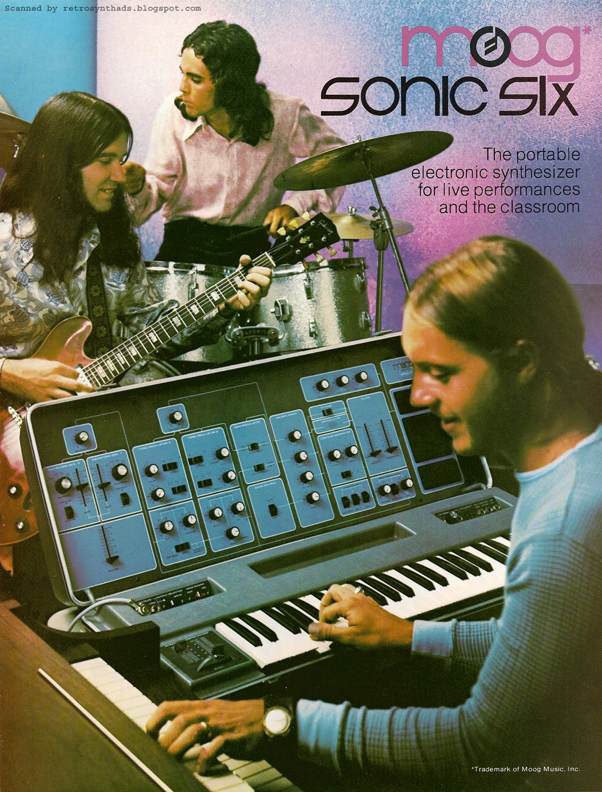
In the years that followed, an unrelenting interest in my electronic music hobby had me acquiring all manner of cool toys from Korg, Yamaha, Kurzweil, Roland, Ensoniq, and Alesis, but nothing from Moog. That finally changed in 2003 when I got a Voyager Performer. Finally, I had a real Moog in my possession! I quickly learned my way around that synth, and with my new-found knowledge began assisting other Voyager owners on the Moog forums. In addition to requests for information, a good number of Voyager users also expressed an interest in sharing patches, which was something that the Moog forum didn’t support, so I started a Yahoo Groups web site for the purpose. In addition to posting patches, I created quite a few informative and helpful articles for the site. It was literally a labor of love, and the site eventually drew hundreds of members, including some from Moog Music.
So at that point I had the familiarity with the instrument, a firm understanding of synthesis principles, and possessed the skills to describe the basic operation and document the features and technical details. All that was missing was the opportunity.
KW: And how did the Moog opportunity come about?
Greg: In a roundabout way actually. Through my Voyager support website, I got to know a few of the folks at Moog and found out that an Editor/Librarian was being developed for the Voyager. I contacted the developer, SoundTower Software, and volunteered to be a beta tester, which they welcomed. At some point during the testing, I asked if there were plans to include a user manual and learned that no provisions had been made for it. I asked I could take a crack at it and they said ‘go for it’. Combining my knowledge of the Voyager and new-found understanding of the software, that manual actually came together pretty quickly and was included with the initial software release with only minimum changes. That manual’s format and layout became the standard for all of the other manuals that followed. Looking back on it now, the SoundTower job was the proverbial ‘foot-in-the-door’ opportunity that led to much bigger things.
But here’s how it happened with Moog: One day I got an email from Jared White, who was the marketing manager for Moog Music at the time. He was aware of the work I had already done for SoundTower and needed someone to create a user manual for a new product they were developing. Feeling both humbled and honored to be asked, I quickly agreed. After completing the requisite non-disclosure agreement, a prototype of the instrument arrived at my door – the Stage 1 Little Phatty. In the weeks that followed, I had a number of email and telephone exchanges with the Moog engineers to get clarity on some of the details and provide bug reports where things weren’t working quite as expected. In the end, it all came together nicely and the completed manual was well-received by Moog.
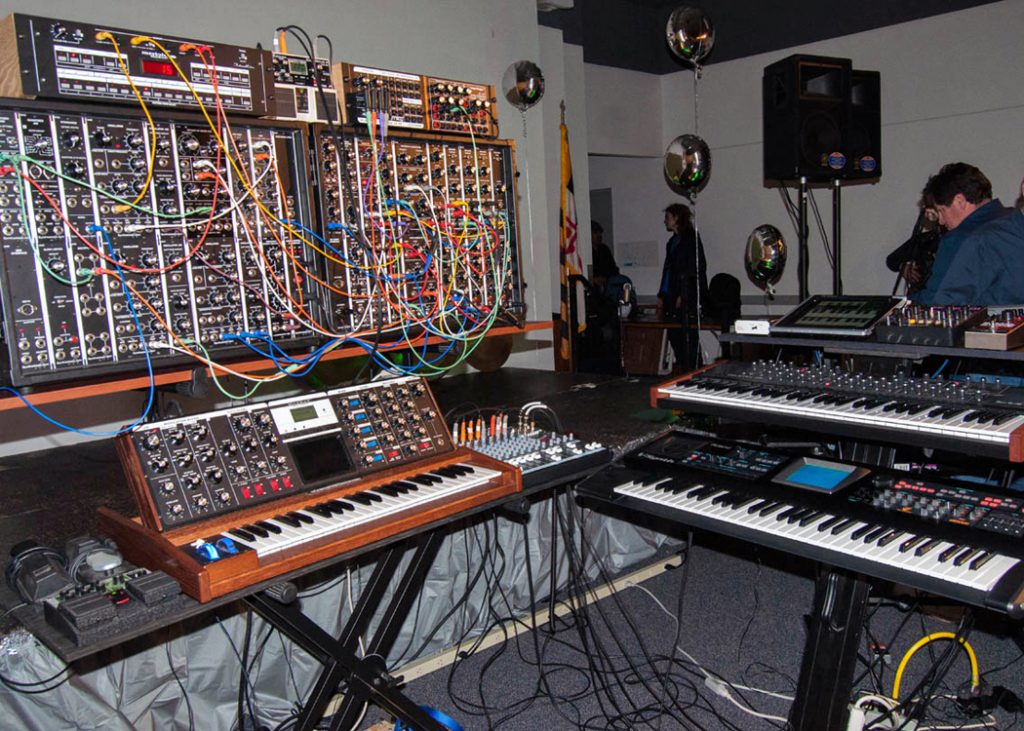
I can’t remember now what publication it was in, but a review of the Little Phatty included some complimentary words about ‘the well-written manual’. I was very proud of that. Typically, if a manual is even mentioned in a review, it’s because it’s incomplete or just plain useless. For that first Little Phatty manual everything worked out great, and Moog continued to rely on me for other projects. I ended up writing the manual for all three versions of Little Phattys, the combined Voyager/RME and Voyager XL manuals, the Taurus Bass pedals, the MP-201 Multipedal, and finally the Minitaur manual. After that, Moog took on the task with their own people.
KW: Which of the Moog projects was most challenging, or unique?
Greg: I’d have to say the user manual for the MP-201 Multipedal was both the most challenging and unique. That product was totally unlike anything I had experienced before. For anyone unfamiliar with it, the MP-201 Multipedal was a four-channel MIDI foot pedal controller that could output both MIDI and control voltages (CVs). This meant it could work with standard MIDI hardware as well as CV devices like the Moogerfooger line of effects and other modular hardware. It had three control modes, including one mode that would produce LFOs – imagine have four different LFO’s at your disposal with each running at different rates and waveforms! While it received favorable reviews, I don’t think the Multipedal was met with much enthusiasm in the marketplace and production of it stopped after a few years. For anyone curious about it, the Multipedal User Manual can still be downloaded from Moog’s web site.
KW: You mentioned earlier about the emails and telephone exchanges with the Moog engineers, but did you ever meet any of them in person?
Greg: No. The entire time I worked for Moog Music the interactions were strictly via email or by phone. I’ve never been to the factory either, although I hope to get down there some day.
KW: So you never met Bob Moog?
Greg: Actually, I did meet Bob a couple of years prior to my involvement with Moog Music. It was back in 2000, and Bob was at the Smithsonian Institute to take part in a series of presentations celebrating the 300th Anniversary of the Piano. One of the presentations was a panel discussion entitled ‘The Keyboard Meets Modern Technology’, which was moderated by Trevor Pinch, the author of ‘’Analog Days”. The panel included Bob, Keith Emerson, Malcolm Cecil and Bob Margouleff (both from TONTO), and David Van Koevering. It was two hours of great stories and first-hand recounting told by the pioneers of the art. I got Bob’s and Keith’s autograph on that day’s program booklet, and that framed program now occupies a place of pride in my home studio.
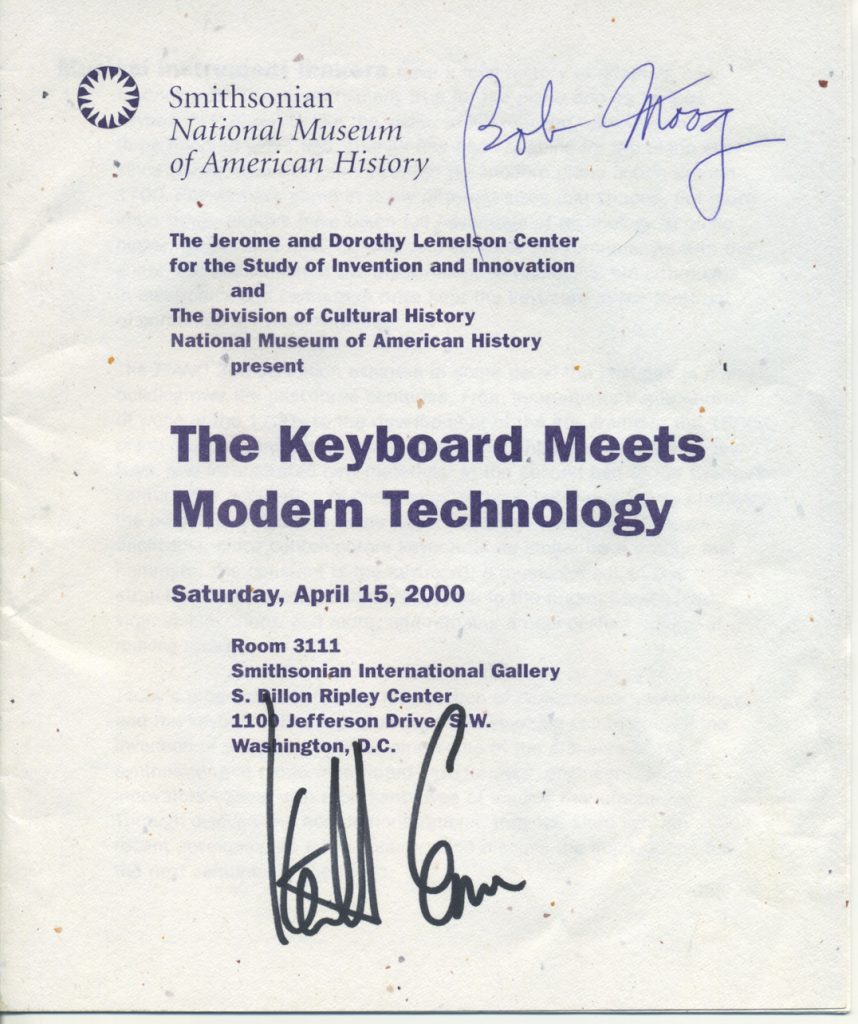
KW: After your experiences with Moog Music what other technical work did you do with synths?
Greg: I worked with SoundTower on a few projects for Dave Smith Instruments (now Sequential) and for Kurzweil. But those days are behind me. Besides, I can’t imagine writing the 160 pages of the Moog One manual today!
KW: So what are you doing these days?
Greg: I’m a moderator on the Moog Music forums, I perform in a Spa ce Music duo called “GHI”, and actively participate in a lot of synth forums, mostly on Facebook. Interestingly, the whole social media thing has made me realize that my early experiences with synths and electronic music as a teenager was not that unique. It turns out that there were many other people who had that same experience–it’s just that we had no way of communicating with one another back then. These days I’ve got synths friends all over the planet, and a lot of them are producing some really wonderful stuff. It’s really a great time to be involved with electronic music.
